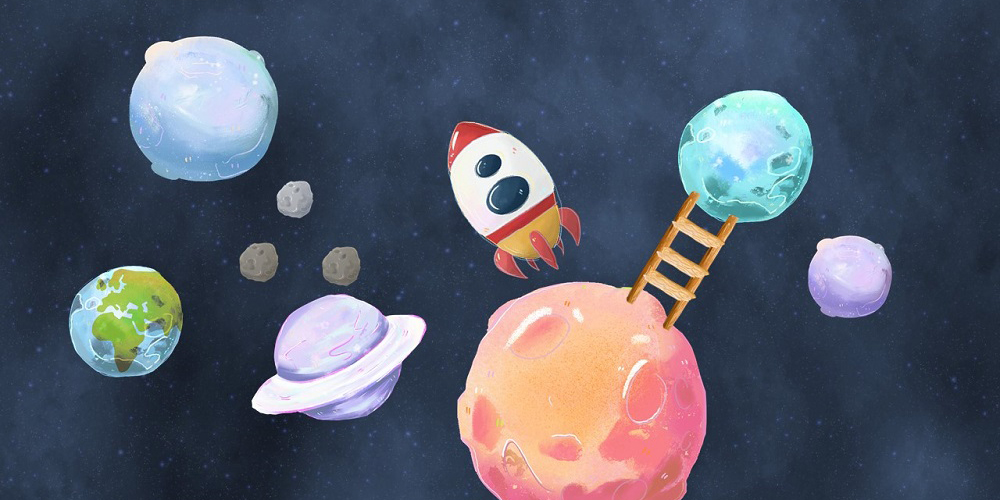Play, exercise, improve psychomotricity skills and live better.
The Exergame project has been developed within the Advanced User Interfaces course at Politecnico di Milano.
The project aims at helping children developing their psychomotricity skills. An engaging game, in a multisensory room, can help young people to learn the basic movements, and also improve the foot-eye coordination and balance.
We worked alongside some psychomotor specialists, already doing activities to improve gross motor skills of children. They reported the real benefits of working in a multisensory environment as youngsters learn faster.
The problem
Walking requires both knowing some standard movements and taking into account a large number of different inputs: the ground’s structure, the presence of obstacles. Most of the time, people do not think about those small choices, because they learnt how to perform this activity when they were kids.
However, this learning process can be difficult for someone, especially for a child with a neurodevelopmental disorder. These ones need to train their psychomotricity skills to improve their lives and avoid the development of instrumental disorders.
The Game
Children are astronauts travelling between different planets. The game is designed to be played by one single player at a time. The therapist or the teacher is within the same room and utilise a tablet to set up and control in real-time the activity.
Every time they need to reach the next planet, kids are asked to perform some movements – like walking on asteroids – correctly. Each planet corresponds to a level of the game. The therapist chooses both the number of levels and the activities to perform in those.
At the end of each level, Emi (the character guiding the child through Space) congratulates the kid for success. We use smart lights and sounds to make this moment happier. When the child reaches the final planet, the magic room is celebrating. Soap bubbles, sounds and lights are turned on to express these happy feelings.
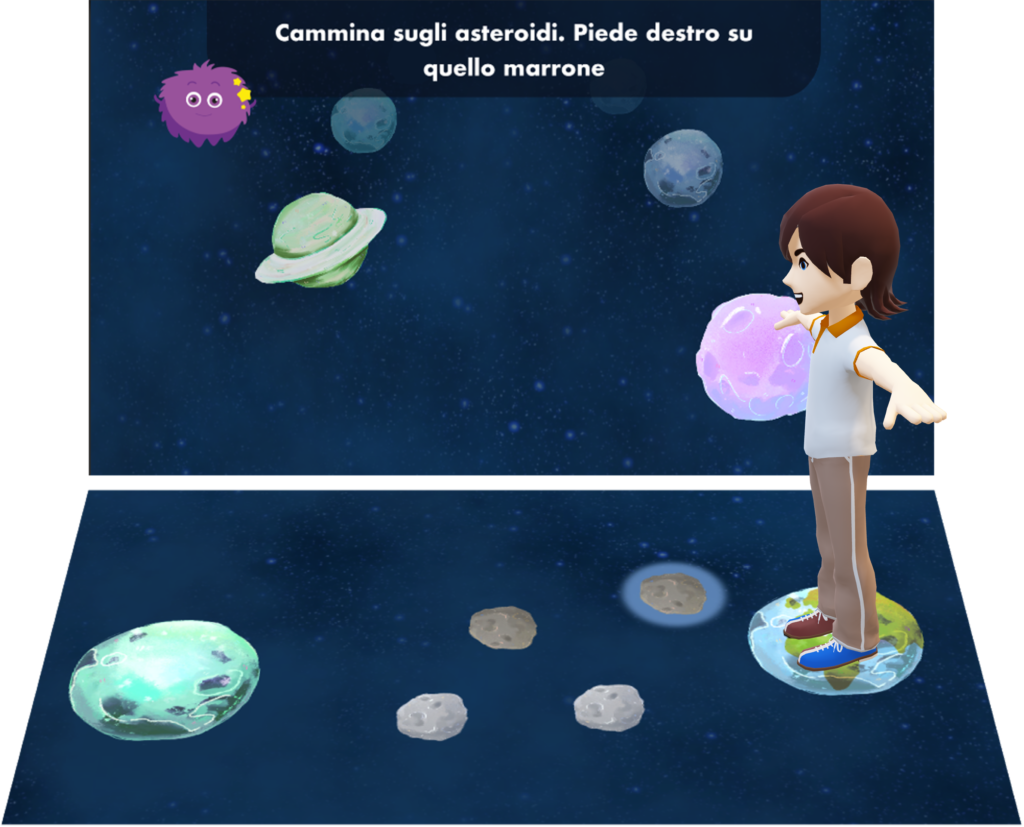
Three main activities
Asteroids level
Asteroids level is designed to teach the kid how to move on specific positions. That activity resembles a floor full of obstacles and only a few safe spots. Forcing the steps can also help the therapist to monitor the balance skills and the coordination between eyes and the performed movement.
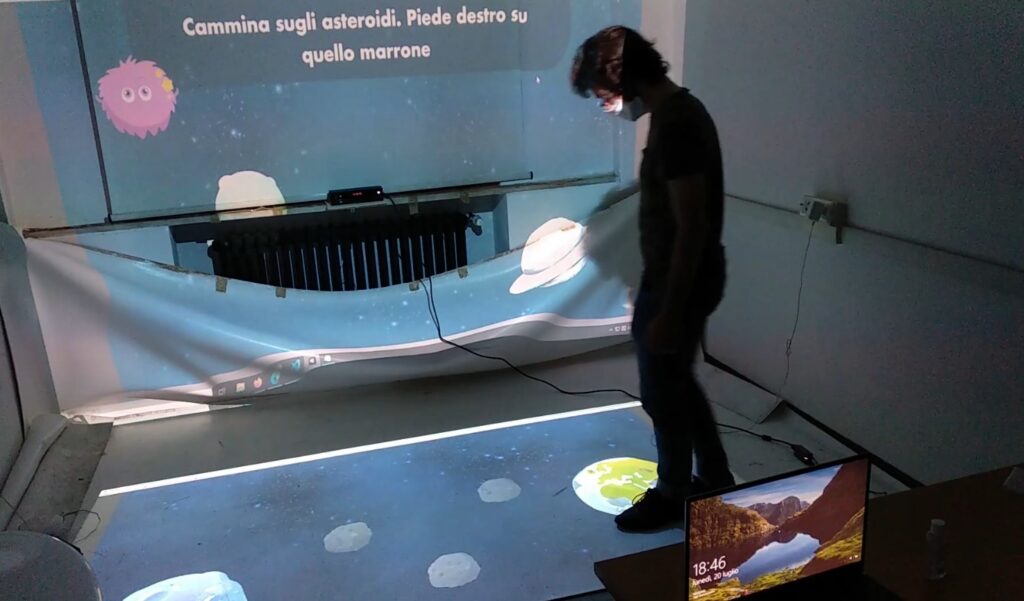
Ladder level
Ladder level gives children more freedom in their movements, so they are forced to choose to place one or two feet on the same rung. Moreover, the therapist can ask the child to perform upper-limb exercises at the same time to monitor coordination.
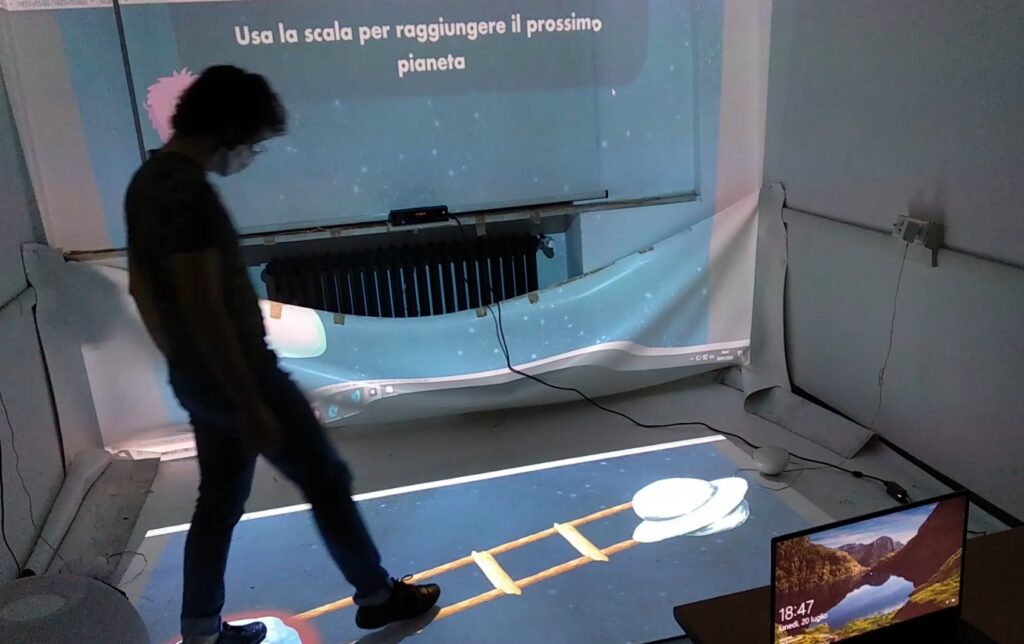
Rocket level
The rocket level requires the child to avoid some space objects, while the spaceship is flying to reach the next planet. The level can teach the child how to move in a very crowded space.
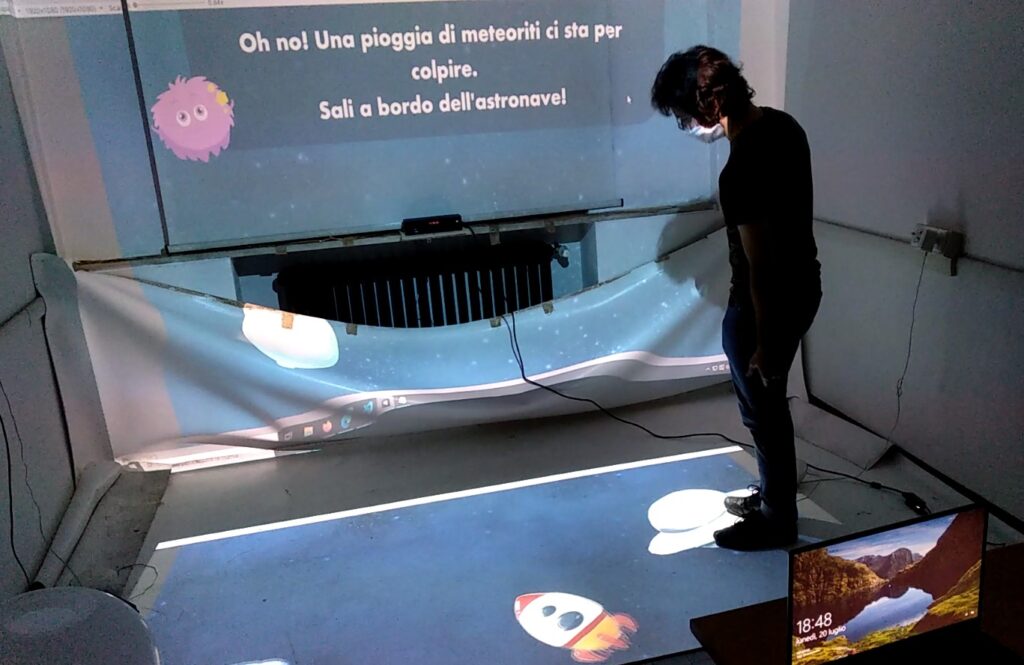
A game for children with NDD
Designing a game activity suitable also for children with neurodevelopment disorders (NDD) is a challenge.
Multisensory rooms, while providing broad opportunities for engaging interaction, incorporate tons of different stimuli that must be tailored to avoid clutter.
In the room used for the project, there are smart lights, surround speakers, soap-bubble machine, and two projections (floor and front screen). Especially for NDD kids, it is essential to avoid an overwhelming amount of visual elements or other stimuli. Those can distract the user from performing the required activity. In order to take into account the diversity of each person, we worked to allow the teacher/therapist to set the parameters for each game activity and turn on and off specific stimuli.
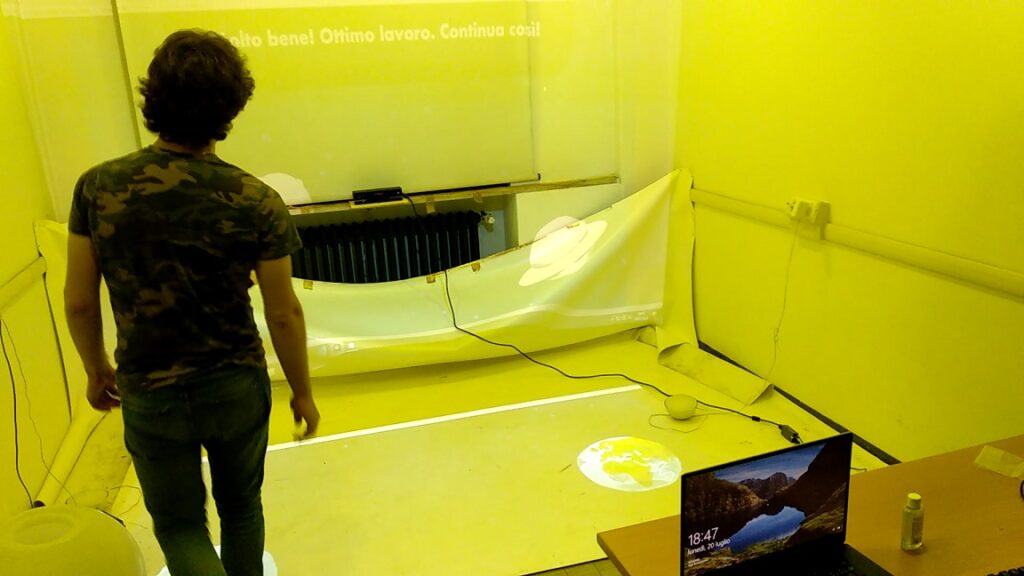
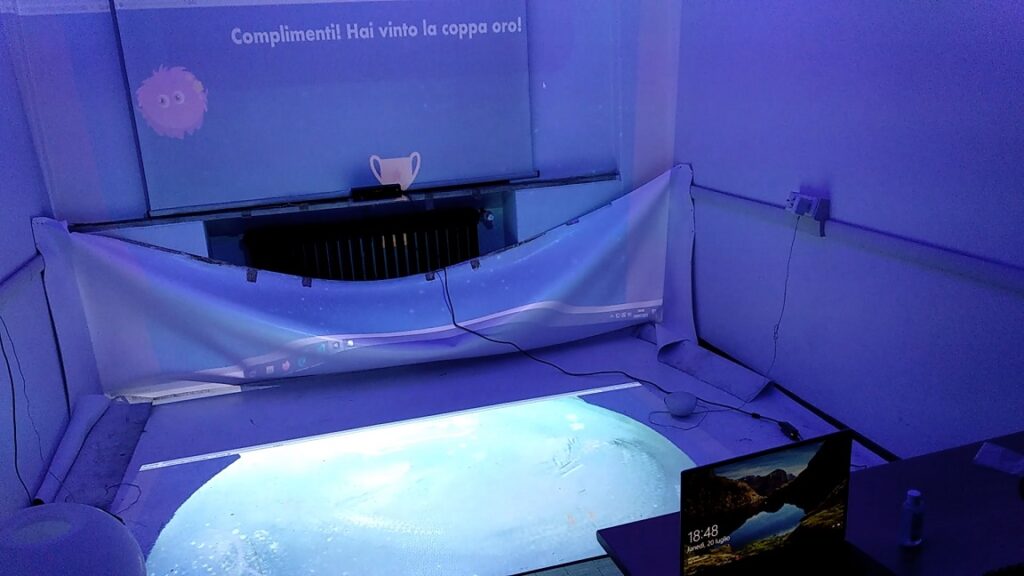
Simplicity in a complex environment
Two screens
The first challenge was the presence of two screen projections: one in front of the children and one on the floor.
Exergame relies on lower limbs movements and their analysis. The floor screen appeared to be the best choice as it allows the child to understand where to move the foot instantly.
The front screen is used only to create a more immersive scenario, displaying the next planets and Emi, the character guiding the experience.
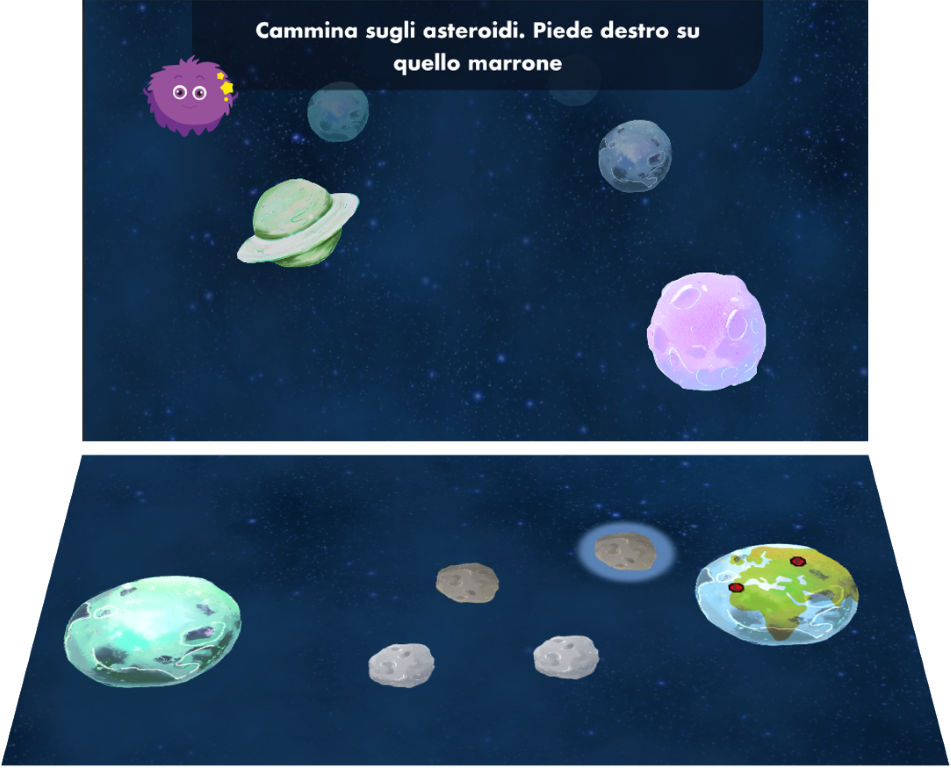
Provide feedback where needed
To reduce the psychological strain required to understand which is the next step, we decided to use a glowing effect behind the following objects.

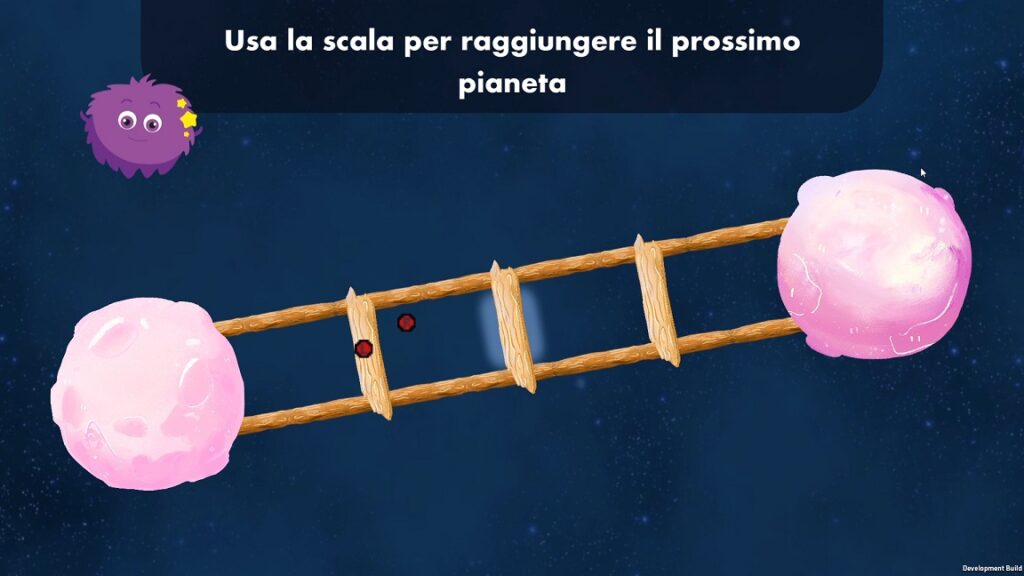
Provide feedback for an error is another challenge, as it leads to an interruption in the user’s flow. Since the child is already looking at the floor projection, we decided to modify the signalisation for the “next object”. We adapted it to provide information on how to correct the wrong movement. At the same time, Emi is explaining the problem to the children using voice output and the front screen. The therapist can disable this output if it creates too much confusion.

Team members
Luca Zorzenon: game development, game design and coordination with therapist
Matteo Primerano: development of the therapist portal
Pietro Maldini: game development, game design
Xiao Fang: game design, design of the UI elements and coordination with therapist
